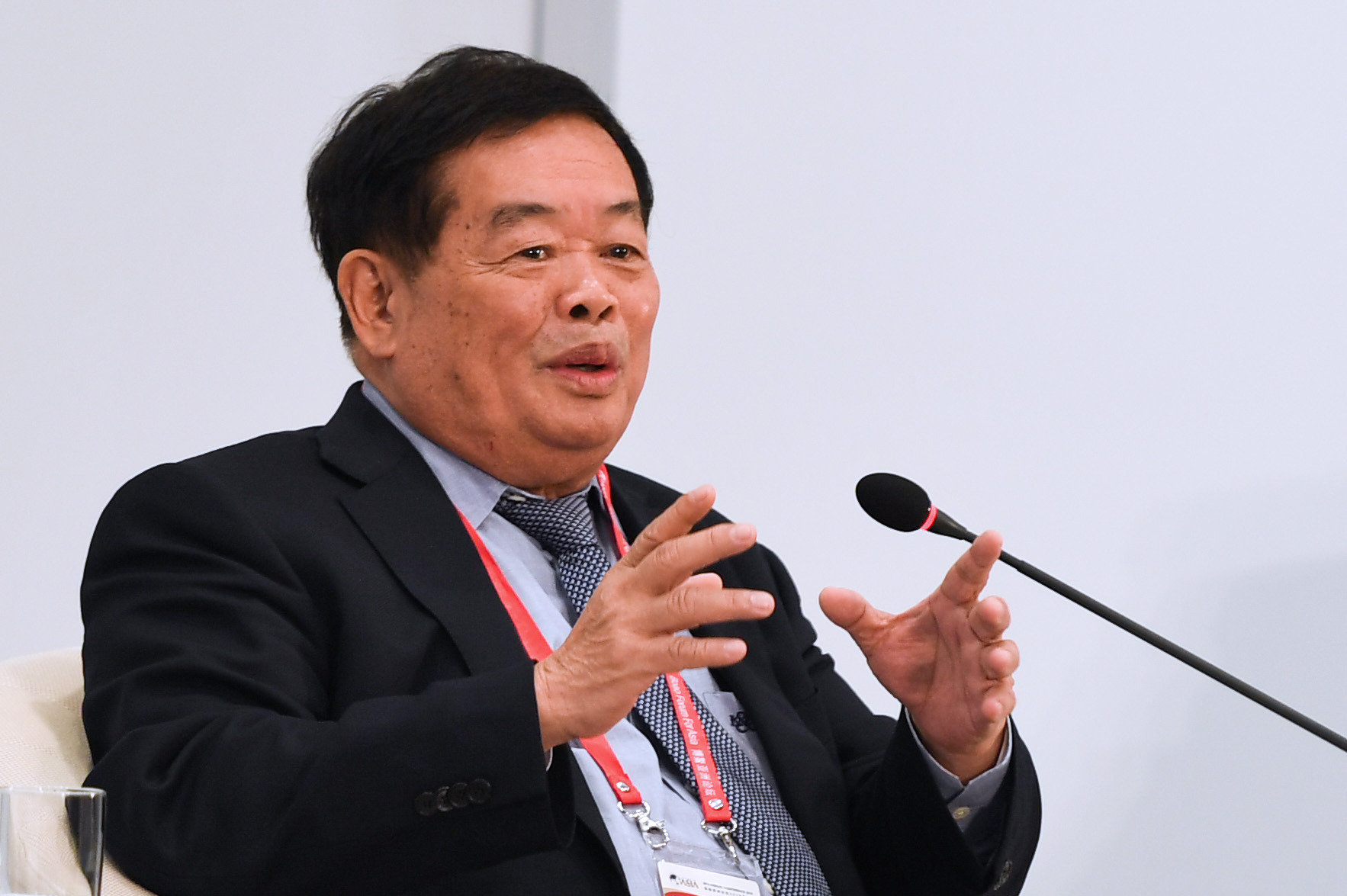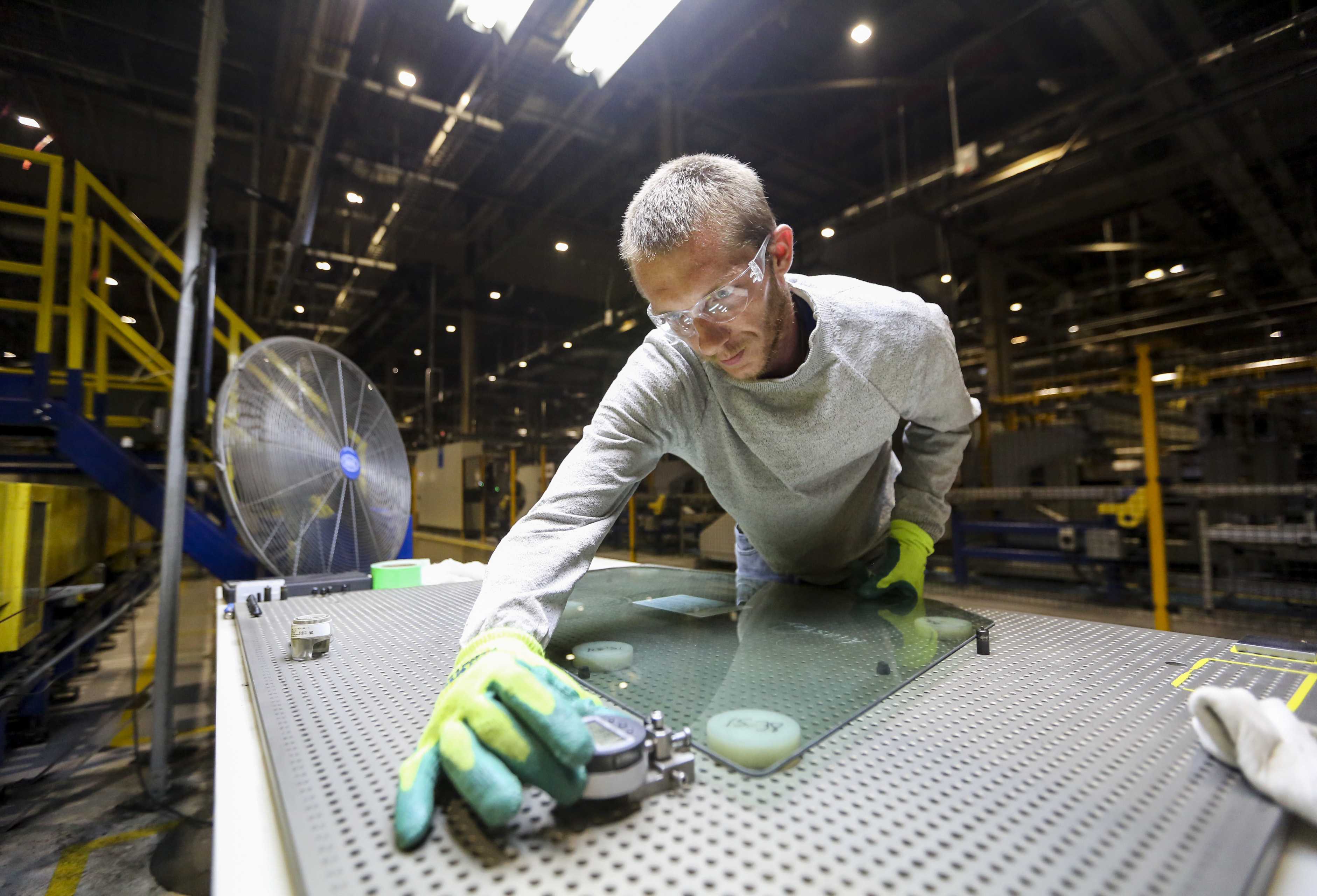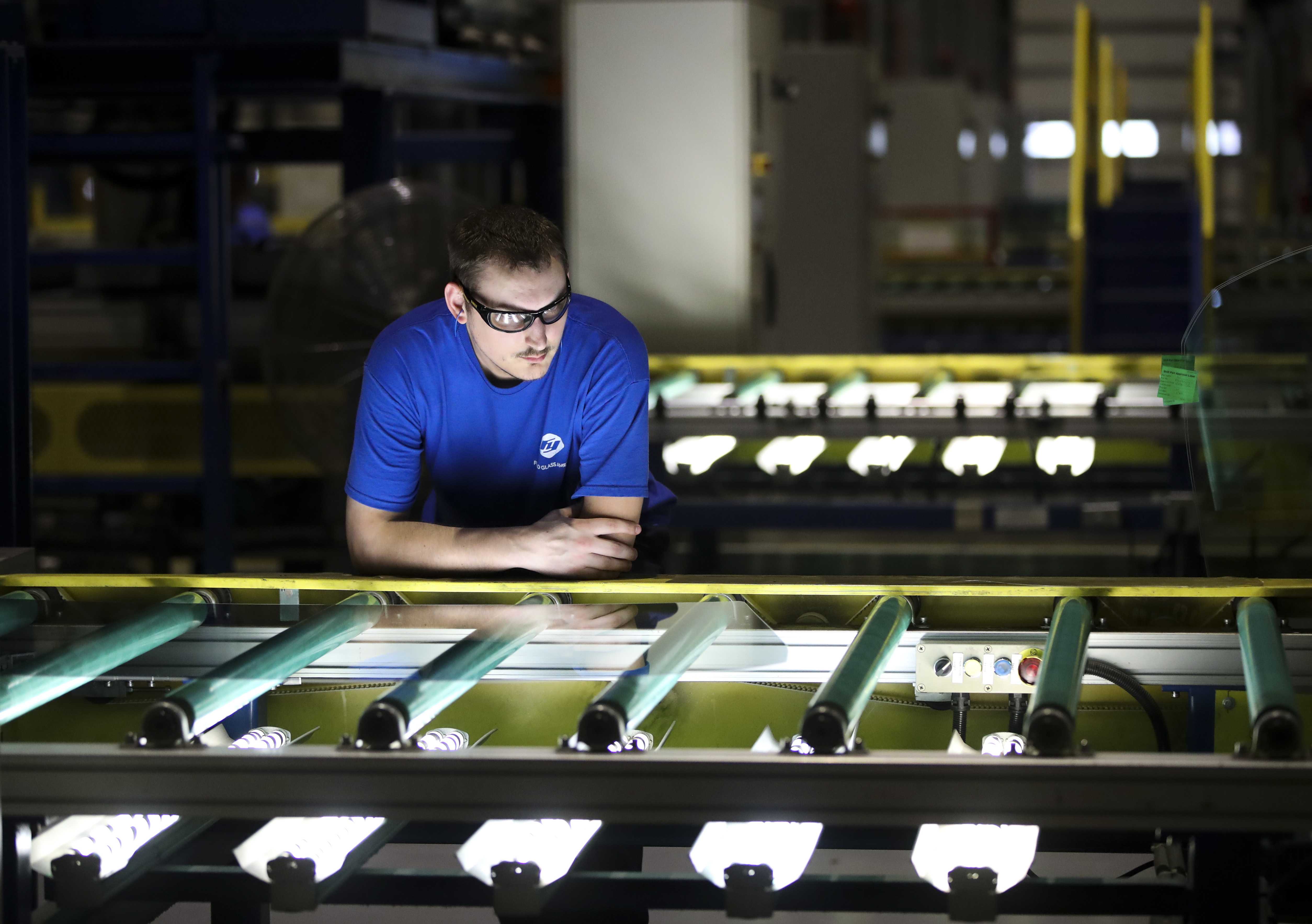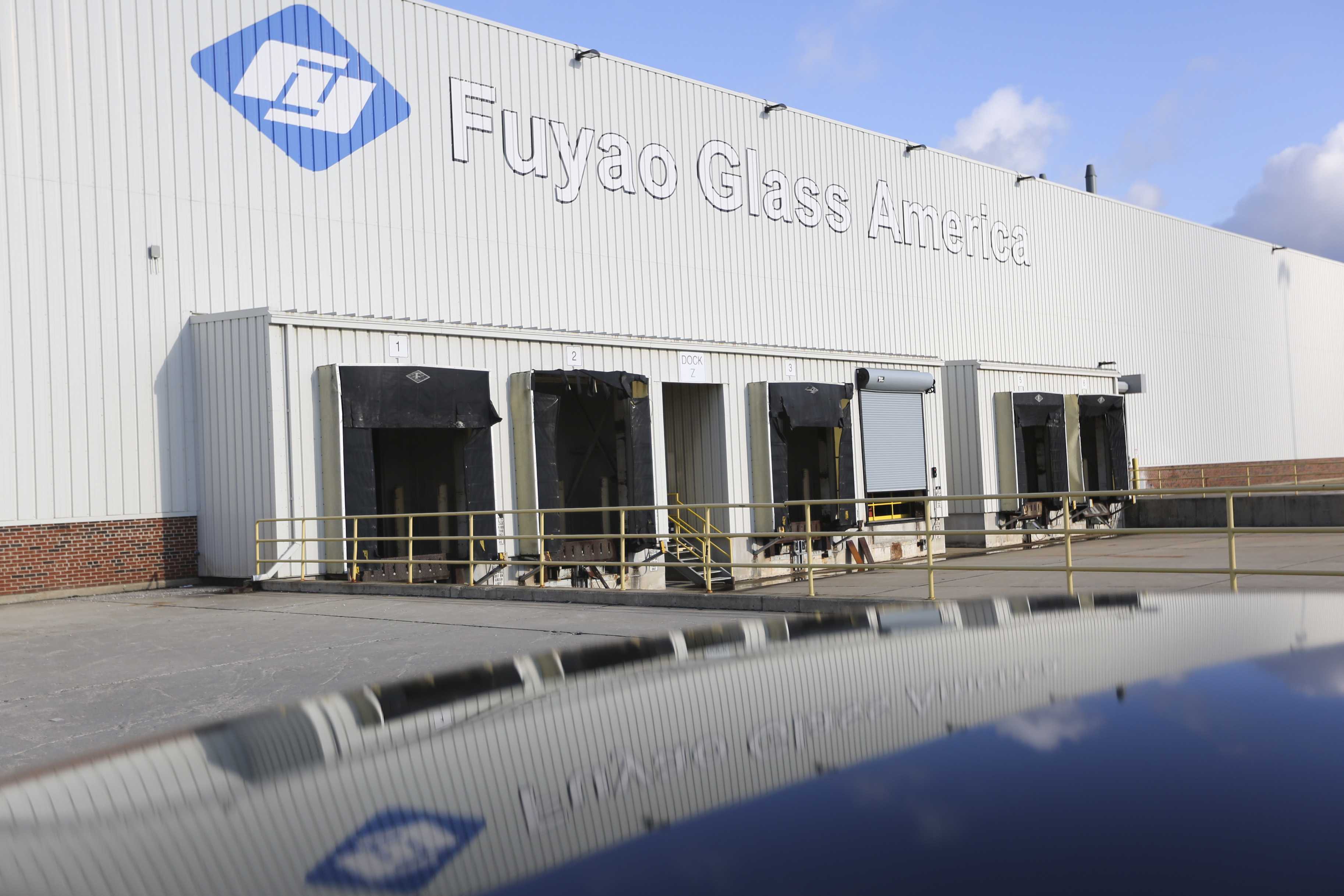when the documentary "american factory" was released in august this year, it quickly captured the attention of audiences from across the pacific ocean, as it presented not only a captivating story, but also a footnote to the dynamics shaping the most important bilateral relationship in the world.
when the documentary "american factory" was released in august this year, it quickly captured the attention of audiences from across the pacific ocean, as it presented not only a captivating story, but also a footnote to the dynamics shaping the most important bilateral relationship in the world.
the movie, set in moraine, ohio, tells the story of how a chinese glass manufacturer revived a shuttered general motors factory, rehiring many of its previous employees, and winning back the prosperity that the local community had all but lost.
but like all compelling stories, it was unclear from the beginning if the fuyao factory would be a story with a happy ending. soon after its launch in october 2016, the differences between china and the united states in terms of business culture, regulations and language came up as hurdles the factory had to overcome.
fortunately for the factory and the residents of moraine, workers, both chinese and american, finally made it, bringing in 24.5 million u.s. dollars in profit in 2018.
 cao dewang, chairman of fuyao glass, speaks at the session of "tax cuts: a global race to the bottom" during the boao forum for asia annual conference 2018 in boao, south china's hainan province, april 11, 2018. (xinhua/yang guanyu)
cao dewang, chairman of fuyao glass, speaks at the session of "tax cuts: a global race to the bottom" during the boao forum for asia annual conference 2018 in boao, south china's hainan province, april 11, 2018. (xinhua/yang guanyu)
the fuyao journey, with all of its ups and downs, was faithfully captured by award-winning filmmakers steven bognar and julia reichert, who then worked through more than 1,000 hours of footage to complete the documentary "american factory."
the drama-filled documentary, fueled by multiple sets of conflicts, was an instant hit after its release by netflix. on the movie review website rotten tomatoes, it has an approval rating of 96 percent, and an average score of 8.51 out of 10. critics on metacritic, another review site, gave the movie "universal acclaim," the highest rating the site gives to films.
in an exclusive interview with xinhua recently, bognar shared behind-the- scenes stories on how the movie came into being, and how he hoped the movie can serve as a bridge of understanding for the peoples of the united states and china.
making the film
the "american factory" project dates back to 2008, when the gm factory closed, dealing a heavy blow to the local community.
"it was very important to our community. generations of people had worked in dayton's gm factory," bognar said. "the jobs were good jobs."
bognar said they began filming the factory when it closed. "it was devastating and we felt the need to make a film about that story. we wanted the rest of the world to understand how significant it was that this factory was closing," he said.
 a worker does quality inspection at the fuyao glass america (fga) facility in moraine of dayton in ohio, the united states, aug. 21, 2018. (xinhua/wang ying)
a worker does quality inspection at the fuyao glass america (fga) facility in moraine of dayton in ohio, the united states, aug. 21, 2018. (xinhua/wang ying)
things took an unexpected turn when fuyao glass decided to open up a glass manufacturing company on the site of the gm factory, giving bognar and reichert a fresh opportunity to continue the storytelling.
"the gm factory closed in 2008 and that huge building sat empty for years until chairman cao (dewang) decided to buy it and reopen it as fuyao glass america. chairman cao understood the symbolic importance of bringing that dead factory back to life," bognar said. "he saw that this factory had such meaning for so many people here and he wanted to make a statement for dayton in the purchasing and rebuilding of that old factory."
bognar said he and his team started filming the beginning of the fuyao factory in february 2015 and accumulated over 1,200 hours of material in their three years of filming, shot during the hundreds of visits the team paid to the factory.
"we would go into the factory and at first we spent a lot of time just getting to know people because that's part of the process. spending time in a place is really one of the most important things, if not the most important thing for our documentary process. you have to really immerse yourself in an environment to understand the story," he said.
bognar said the team did not have a clear vision of what the story would eventually look like at the beginning, and would try to gather as many points of view and material as possible. it was not until 2017, when efforts to establish a union among the workers failed, that the film crew got the "basic arc of the story."
"it had a beginning, a middle, and an end. the beginning was very optimistic and exciting. the middle was more challenging and the end led to real conflict. it felt organic. it felt like it just seemed to be the structure that the film needed," he said.
bognar and his team said the film was given the title "american factory" because it was a chinese business' "american adventure."
 photo taken on aug. 21, 2018 shows a view of the workshop building of the fuyao glass america (fga) facility in moraine of dayton in ohio, the united states. (xinhua/wang ying)
photo taken on aug. 21, 2018 shows a view of the workshop building of the fuyao glass america (fga) facility in moraine of dayton in ohio, the united states. (xinhua/wang ying)
taking on challenges
the documentary presented the arrival and growth of the fuyao factory from the perspectives of many people, including workers and management personnel of both countries, as well as cao dewang, the top executive of fuyao, himself.
by putting sometimes contradictory views together, the movie made it clear that the factory would not be smooth sailing from day one.
in the film, different management styles, language barriers and cultural gaps have resulted in fraught relationships. but from bognar's point of view, cultural clashes like these are inevitable as more chinese companies start their businesses in the united states.
"fuyao is one example of chinese companies coming to the united states and reopening or buying closed-up industries or factories," bognar said, citing as an example a number of textile factories in south carolina that have been purchased by chinese businessmen who reopened them and hired americans.
"the fuyao story, we believe, shows the real challenges of doing this, of bringing together two cultures that don't necessarily understand each other and we want it to be honest about that," bognar said.
in the film, the chinese and american workers bond over time, with the chinese workers sharing their expertise with their american colleagues, and american workers inviting their chinese coworkers over for home parties.
the film ends on a sobering note when a group of american workers try to form a union but fail in a factory-wide vote, signaling that the company still has a ways to go to become an "american factory."
"fuyao is still appreciated for bringing jobs to dayton. there are now 2,200 jobs that we did not have before, which is great," bognar said. "while there's gratitude, there's also an expectation that fuyao will grow and learn and adapt."
 an employee works at the fuyao glass america (fga) facility in moraine of dayton in ohio, the united states, aug. 21, 2018. (xinhua/wang ying)
an employee works at the fuyao glass america (fga) facility in moraine of dayton in ohio, the united states, aug. 21, 2018. (xinhua/wang ying)
building a bridge
bognar said the coming of fuyao to ohio was a window for the locals, many of whom had little understanding of china, to learn about the country.
"fuyao brought a level of chinese culture to dayton that we had not seen before. they built and opened a restaurant on the corner of fuyao property and it is really great food," bognar said.
for american workers at fuyao, the chinese work ethic was also a novelty. "we think the americans in dayton have been exposed to a chinese work ethic, a work ethic that they could not have imagined and they realize that's part of how that company became a success."
even for the filmmakers themselves, the project was an enjoyable experience in getting more exposure to the world's second-largest economy. bognar said some of the most memorable moments took place when the crew was filming in china, at fuyao's headquarters.
"some of our most memorable moments filming this movie happened when we were filming in china. we really loved being there, experiencing chinese people and culture and food. we loved how vibrant and alive chinese communities were," he said.
bognar said he hopes that the chinese audience can also learn something about american workers through the movie.
"we hope that the documentary gives empathy for chinese working people to american audiences and empathy for american working people, too, to chinese audiences. the film can build a bridge of understanding between these two great cultures and that working people, regardless of their background, can realize that they actually have a lot in common," he said.
